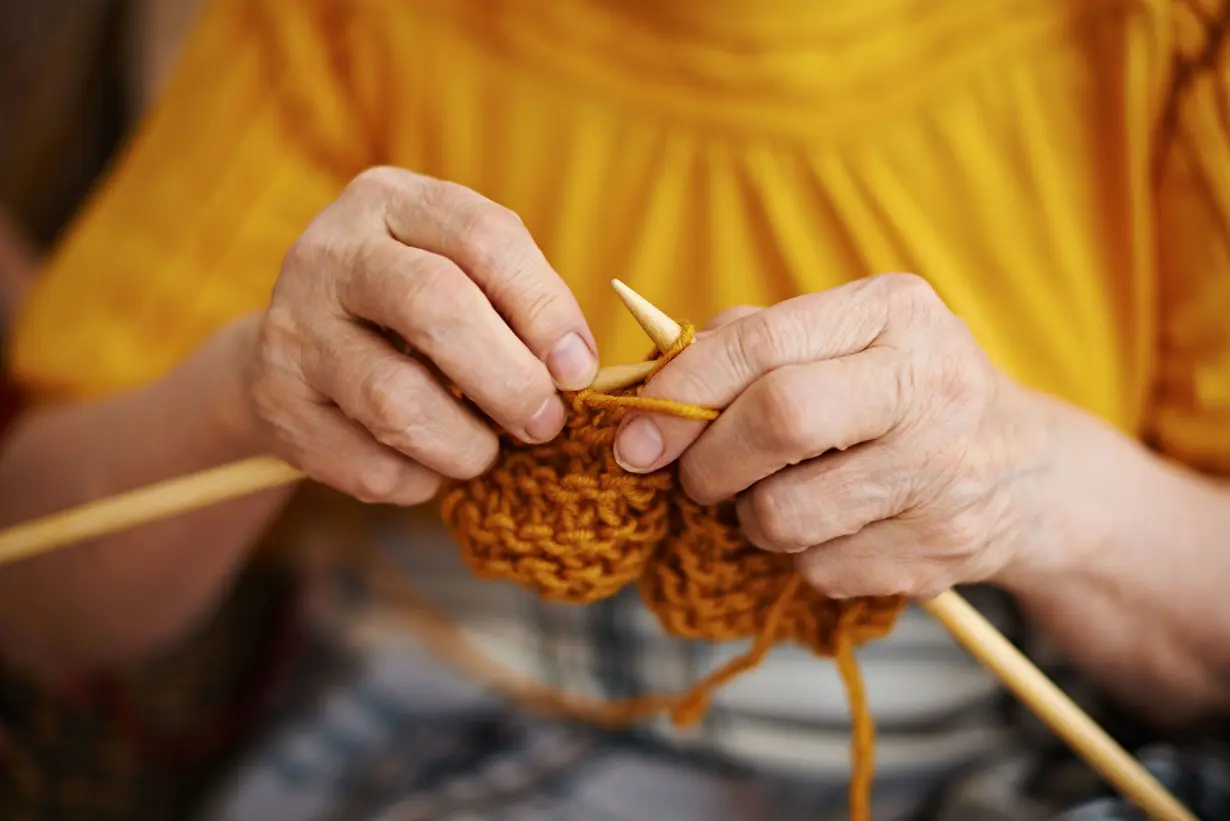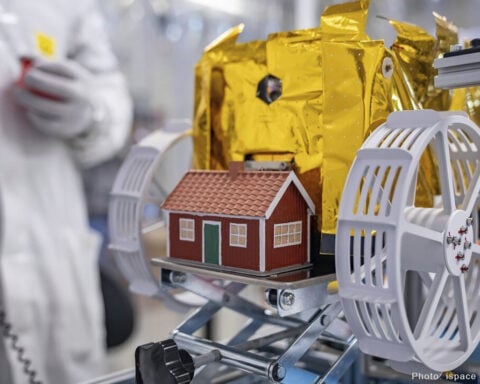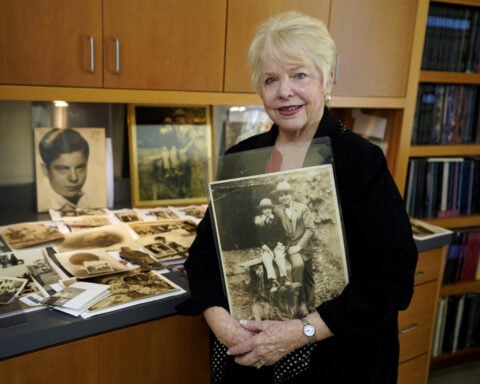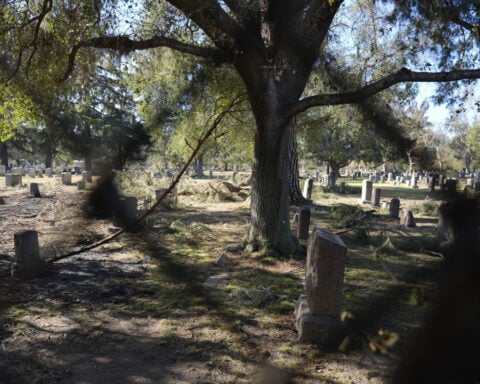Southampton, Pennsylvania (CNN) — Walking into my grandmother’s house, I watch her hands move in a fast-weaving motion as stitches extend from her knitting needles. Beside her are layered stacks of knit blankets, scarves and ponchos stitched with carefully selected color schemes and patterns made of wool yarn. She donates these blankets to children’s hospitals and foster homes.
Her favorite pastime is creating. She is always crafting, whether it’s knitting, coloring, scratch art or most recently, dabbling in gem art. These activities provide her satisfaction and purpose in ways more fulfilling than work.
She infused her love for arts and crafts into the rest of my family. My mom joined community theater groups when she became an empty nester and learned pour painting. My younger cousin photographs nature, and his father (my uncle) has a comedic podcast with voice actors. My twin brother and I sang in college — it kept us sane while balancing our heavy academic workloads.
We thought it was beneficial for our health, and we were right. Creating art reduces levels of cortisol, the body’s stress hormone, past research has shown.
“Engaging with arts and crafts is accessible and affordable. Options such as knitting and drawing require very few tools and can be engaging and creatively fulfilling activities,” said Dr. Helen Keyes, cognitive psychologist and head of the school of psychology and sport science at Anglia Ruskin University, via email.
Now, a new study by Keyes and fellow researchershas found that engaging in creative activities can significantly boost well-being by providing meaningful spaces for expression and achievement.
Although prior studies have shown that creating arts and crafting is therapeutic for people with mental health conditions, the general population has been understudied, according to the study, which published recently in Frontiers in Public Health.
That’s why they sampled members of the general population without diagnosed illnesses to see how arts and crafts might contribute to well-being and may reduce loneliness outcomes in everyday life.
The team used data from a major national survey in the UK between 2019-2020 to investigate how creative activities could impact life satisfaction, controlling for variables known to affect wellbeing such as gender, age group, health, employment status and deprivation. The researchers analyzed a sample of 7,182 participants living in England (age 16 and over) from the annual Taking Part survey conducted by the UK’s Department for Culture, Media, and Sport, which explores how the public engages with these activities.
“We kept our analysis to arts and crafting at a broad level, rather than focusing on specific hobbies, as we know that people’s preferences vary and they will find the craft or creative activity that works best for them,” Keyes said.
More than 37% of survey respondents confirmed they had taken part in at least one craft activity over the last year. They were also asked about their employment status, their health, their sense of life being worth living, how frequently they feel lonely and their levels of sensed happiness, anxiety and life satisfaction.
Participants’ reported happiness, life satisfaction and sense of lives being worthwhile were positively correlated to participating in arts and crafts, but arts and crafts were not associated with decreased anxiety or loneliness which requires further investigation. Additional study is needed to examine the social aspects of creative activities, researchers said.
“All forms of art can be beneficial in boosting mental health. Benefits include: increase in self-esteem, reduction in anxiety/stress, improving communication, and fostering creativity,” said Dr. Frank Clark, a psychiatrist with Prisma Health and a poet, via email. Clark was not involved in the study.
Arts and crafts for public health
The researchers suggested that arts and crafts could improve public health.
“Governments and national health services might consider funding and promoting crafting, or even socially prescribing these activities for at-risk populations as part of a promotion and prevention approach to wellbeing and mental health,” Keyes said. “Engaging with crafting is something that is relatively easy to introduce into your life.”
Creativity does not have one look
Crafting provides an opportunity for a sense of achievement and expression through creation.
“A sense of mastery is important for wellbeing, and there is inherently a sense of mastery associated with crafting and creating art; that is, people can see their progress and be proud of what they are producing,” Keyes said via email.
If you don’t think of yourself as artistic or creative, Clark has four suggestions to tap into your creative side: Reframe your thinking to be optimistic about your creative potential; do not be afraid to take risks to try a new activity; foster relationships with people who are in a creative space that’s interesting to you; and think about what you did creatively as a child and do it again.
Try it for yourself
A cheap option for indulging in creativity is coloring. Although some may perceive coloring as an activity for kids, “I love adult coloring books and encourage everyone to embrace their inner child,” Clark said. “Coloring is an example of a mindfulness activity that has a multitude of health benefits. It can help foster social connection, improve concentration, and spur creativity.”
And when you’re creative, anything can happen. “Creativity has the power to foster resilience, restoration, and reconciliation,” he said. “It is a cathartic antidote that can help provide a sense of meaning and purpose for humanity.”
The-CNN-Wire
™ & © 2024 Cable News Network, Inc., a Warner Bros. Discovery Company. All rights reserved.

 Stock market today: Asian stocks mixed ahead of US inflation data
Stock market today: Asian stocks mixed ahead of US inflation data
 TikTok seeks to reassure U.S. employees ahead of Jan. 19 ban deadline
TikTok seeks to reassure U.S. employees ahead of Jan. 19 ban deadline
 US won't seek charges in unarmed Black motorist Ronald Greene's fatal 2019 arrest
US won't seek charges in unarmed Black motorist Ronald Greene's fatal 2019 arrest
 Euro zone households could increase consumption, ECB chief economist says
Euro zone households could increase consumption, ECB chief economist says
 Foreigners sold South Korean equities last month by most since early 2020
Foreigners sold South Korean equities last month by most since early 2020
 As fires ravage Los Angeles, Tiger Woods isn't sure what will happen with Riviera tournament
As fires ravage Los Angeles, Tiger Woods isn't sure what will happen with Riviera tournament
 Antetokounmpo gets 50th career triple-double as Bucks win 130-115 to end Kings' 7-game win streak
Antetokounmpo gets 50th career triple-double as Bucks win 130-115 to end Kings' 7-game win streak
 No 97 Laura Siegemund upsets Olympic champion Zheng Qinwen at the Australian Open
No 97 Laura Siegemund upsets Olympic champion Zheng Qinwen at the Australian Open








